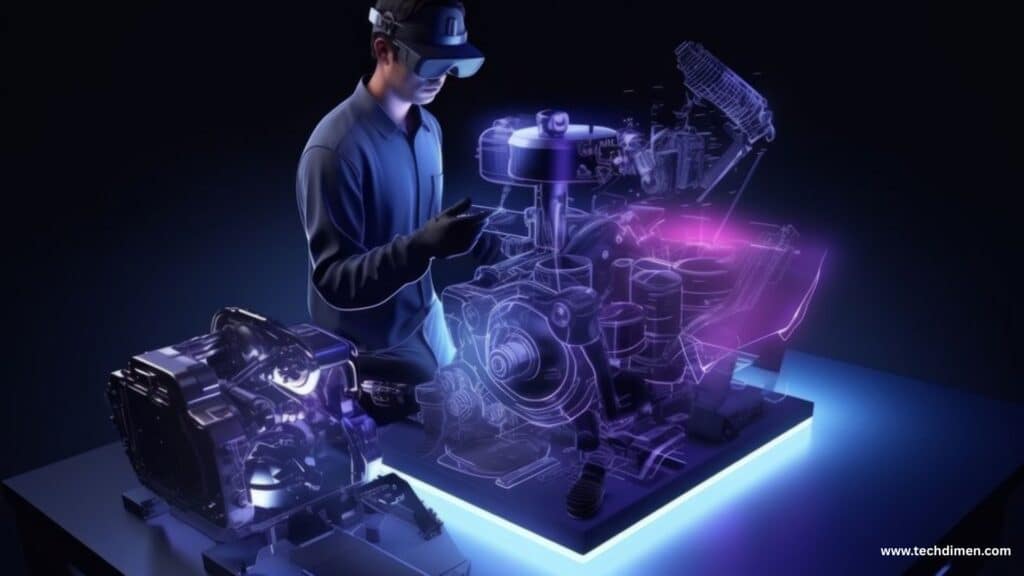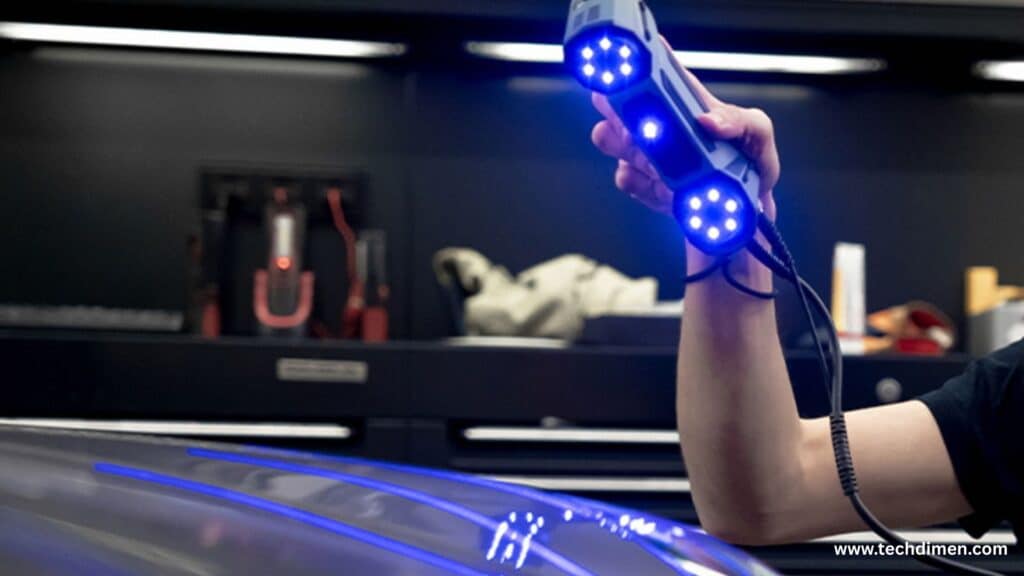Shining technology represents a revolutionary leap in how we use light to enhance computing, communication, and everyday environments. By harnessing the power of photons instead of electrons, shining technology promises faster data processing, smarter systems, and a more sustainable future. This article explores what shining technology is, its core innovations, real-world applications, benefits, challenges, and how you can prepare for its transformative impact.
What Is Shining Technology
At its essence, shining technology involves the use of light specifically photons to perform functions traditionally handled by electronic systems. Unlike electrical signals carried by electrons, photonic systems use light waves to process and transmit information. This key difference offers enormous advantages in speed, energy efficiency, and bandwidth.
Shining technology includes a broad spectrum of innovations, such as photonic computing, smart lighting systems, visible light communication (Li-Fi), and advanced optical sensors. These light based technologies are rapidly evolving and integrating into industries from healthcare to manufacturing.
The Core Innovations Driving Shining Technology

The heart of shining technology lies in photonics, the science of light generation, manipulation, and detection. Photonic integrated circuits (PICs) are microchips that use light to process information. These chips can perform complex computations at speeds far beyond traditional silicon electronics, with minimal heat generation.
Nano optics is another key innovation, involving the manipulation of light at the nanometer scale. This enables ultra precise control for applications such as holographic displays, light-based medical diagnostics, and wearable light technology.
Visible light communication, commonly known as Li Fi, is transforming wireless data transmission by using LED light to send information, offering much higher speeds and enhanced security compared to Wi-Fi.
How Photonic Computing is Changing the Game
Photonic computing replaces electronic circuits with light-based circuits, enabling data to travel and be processed at the speed of light. Unlike electronic chips that produce heat and require cooling, photonic chips run cooler and more efficiently, which means they can be more densely packed and more powerful.
Advancements in silicon photonics and photonic integrated circuits are pushing this technology closer to mass adoption. Photonic computing has major potential in AI, big data analysis, and high performance computing, promising to revolutionize how data centers and supercomputers operate.
Smart Lighting Systems: Lighting That Thinks and Adapts

Smart lighting integrates sensors, AI, and network connectivity to dynamically adjust illumination based on environmental conditions and human behavior. Shining technology enables these systems to optimize energy use, enhance comfort, and support productivity.
In offices and factories, smart lighting can reduce energy consumption by up to 80 percent by adjusting brightness and color temperature in real time. In homes, it improves user experience through responsive ambient lighting. Public infrastructure benefits as well, with smart streetlights that enhance safety and reduce costs.
Visible Light Communication The Future of Wireless Connectivity
Li-Fi technology uses visible light to transmit data at ultra high speeds, leveraging LED bulbs to create a secure wireless network. Because light does not penetrate walls, Li Fi provides an inherently secure environment ideal for sensitive settings such as hospitals, government facilities, and airplanes.
Li Fi offers transmission rates hundreds of times faster than traditional Wi-Fi, with very low latency. Trials around the world demonstrate its ability to handle high-density environments and avoid radio frequency interference, positioning it as a compelling alternative to conventional wireless technologies.
Industries Transformed by Shining Technology

Healthcare has embraced light-based medical diagnostics, using photonics to detect diseases early and guide surgeries with light-guided tools. Manufacturing is integrating smart factory lighting and optical sensors to improve precision and reduce waste.
Retail environments are adopting interactive lighting displays to create immersive shopping experiences. Autonomous vehicles rely on photonic sensors for enhanced vision and navigation. Smart cities use adaptive street lighting to improve energy efficiency and public safety.
Architecture benefits from sustainable lighting systems that automatically adjust for daylight and occupancy, reducing energy costs while enhancing comfort.
The Importance of Nano-Optics in Shining Tech
Nano-optics allows manipulation of light at the scale of billionths of a meter, enabling new functionalities impossible with conventional optics. This technology underpins innovations like transparent OLED displays, light-driven algorithms for real-time control, and ultra-sensitive environmental sensors.
Nano-optics is critical for developing wearable light tech that monitors health, supports augmented reality, and interfaces with smart ecosystems seamlessly.
Environmental and Energy Benefits of Shining Technology
A major advantage of shining technology is its energy efficiency. Traditional electronics and lighting systems waste considerable energy as heat. Photonic devices consume far less power, dramatically lowering electricity use.
Smart lighting alone has proven to cut building energy consumption by up to 70 percent. By reducing the carbon footprint of data centers through photonic computing, shining technology contributes directly to global sustainability goals.
Challenges Facing Shining Technology Adoption
Despite promising benefits, shining technology faces hurdles before widespread adoption. High production costs for photonic components limit scalability. The complexity of integrating new light-based systems with existing infrastructure is a major barrier.
There is also a shortage of skilled professionals trained in photonics and optical engineering. Regulatory and safety concerns, especially around ultraviolet and infrared light applications, require careful management.Addressing these challenges will require collaboration among researchers, manufacturers, policymakers, and educators.
The Future Outlook for Shining Technology
Looking ahead is set to explode in influence. Quantum photonics and optical AI systems will unlock new computational paradigms. Integration with 5G and edge computing will enhance smart city infrastructure and IoT devices.
The global shining technology market is projected to surpass $1.2 trillion by 2030. This growth will be fueled by innovations in photonic integrated circuits, Li-Fi networks, and sustainable lighting systems.
How Businesses Can Prepare for the Shining Tech Revolutio
Companies should begin by evaluating current lighting and data infrastructure to identify opportunities for photonic integration. Piloting smart lighting or Li Fi projects can demonstrate value and build expertise.
Investing in employee training around photonics, optical systems, and smart sensors will create a workforce ready for next generation technology. Partnering with startups and research institutions focused on shining technology can accelerate innovation.A strategic approach to adoption will ensure businesses stay ahead in a rapidly evolving technology landscape.
in this World Success Stories of Shining Technology
In Amsterdam, Philips implemented AI driven smart street lighting that cut energy use by 70 percent while improving safety. Scandinavian hospitals saw reduced patient recovery times after adopting circadian lighting systems that adjust color temperature throughout the day.
PureLiFi’s deployment of Li Fi in UK schools boosted internet speed and reduced electromagnetic interference, enhancing learning environments.
Companies At a Glance
| Company Name | Industry & Location | Founded | Revenue (Approx.) | Employees | Financial Highlights |
|---|---|---|---|---|---|
| SHINING 3D | 3D scanning & printing — Hangzhou, China; global branches in Germany, US | 2004 | $140M (2024 est.) | 1,300+ | Invests heavily in R&D, strong global growth, privately held |
| Shining Building Business Co., Ltd. (TWSE:5531) | Real estate development — Taichung, Taiwan | IPO in 2001 | ~$60M (NT$1.9B) | Data not disclosed | Gross margin ~33%, but suffers from large operating losses and high debt (D/E ≈ 235%) |
| Shining Victory Motor Electronic Co., Ltd. (TWSE:2248) | Automotive electronics — Taiwan | Date unknown | Not public | Not public | Strong financials, low debt (~44%), excellent interest coverage ratio (~51x) |
| Shining Technology Co., Ltd. (Shenzhen) | Geophysical survey instruments — Shenzhen, China | Unknown | Unknown | Unknown | Limited data; appears to serve a niche industrial market |
FAQs Shining Technology
What exactly is Shining Technology?
Shining Technology involves cutting-edge innovations that use light such as photonic computing and smart lighting systems—to revolutionize how we process information and interact with our environment.
How does Shining Technology actually work?
It uses photons (light particles) instead of electrons to handle data and control systems. This approach enables faster speeds, lower heat, and more energy-efficient performance through technologies like optical sensors and photonic chips.
Which industries are using Shining Technology today?
Industries like manufacturing, healthcare, retail, transportation, and architecture are leading the way. For instance, hospitals use light-based diagnostics to speed up tests, while factories improve efficiency with smart lighting.
Is Shining Technology energy efficient?
Definitely. Smart lighting systems can adjust brightness based on real-time needs, cutting energy use and reducing costs, which helps businesses go greener.
What challenges does Shining Technology face?
There are hurdles like high costs, material limits, complex regulations, and a shortage of experts trained in photonics and light-based systems.
What’s next for Shining Technology?
Expect more integration with quantum computing and AI. Over the next 5 to 10 years, shining tech will become more affordable, scalable, and even smarter, transforming many sectors.
Can small businesses take advantage of Shining Technology?
Yes! Although the initial setup can be pricey, small businesses can adopt it gradually by partnering with innovators and training their teams, leading to better efficiency and customer experiences.
How is Shining Technology different from traditional electronics?
Traditional electronics rely on electrons, which generate more heat and are slower. Shining Technology uses photons, allowing faster data transfer with less heat and improved energy efficiency.
How should a business prepare for Shining Technology?
Start by assessing your current tech setup, invest in team training, collaborate with shining tech experts, and plan a phased rollout to ensure smooth adoption and maximum return.
Where can I find more information on Shining Technology?
Check out industry reports, scientific journals, tech blogs, and major events like the SPIE Photonics West conference to stay updated on the latest breakthroughs.
Conclusion: Embracing a Brighter Technological Future
Shining technology is no longer just an exciting concept; it is transforming industries and daily life around the world. Its combination of speed, energy efficiency, and adaptability positions it as a key driver of innovation in the years ahead.
As photonic computing, smart lighting, and Li-Fi mature, they will unlock new possibilities in healthcare, manufacturing, communications, and beyond.
Businesses and individuals that embrace this light-powered revolution will illuminate the path forward into a smarter, more sustainable future.
If you want to dive deeper into the world of shining technology or explore specific applications like photonic integrated circuits or smart lighting ecosystems, there are many expert organizations and resources dedicated to this fast-growing field.

Jhon AJS is a tech enthusiast and author at Tech Dimen, where he explores the latest trends in technology and TV dimensions. With a passion for simplifying complex topics, Jhon aims to make tech accessible and engaging for readers of all levels.







